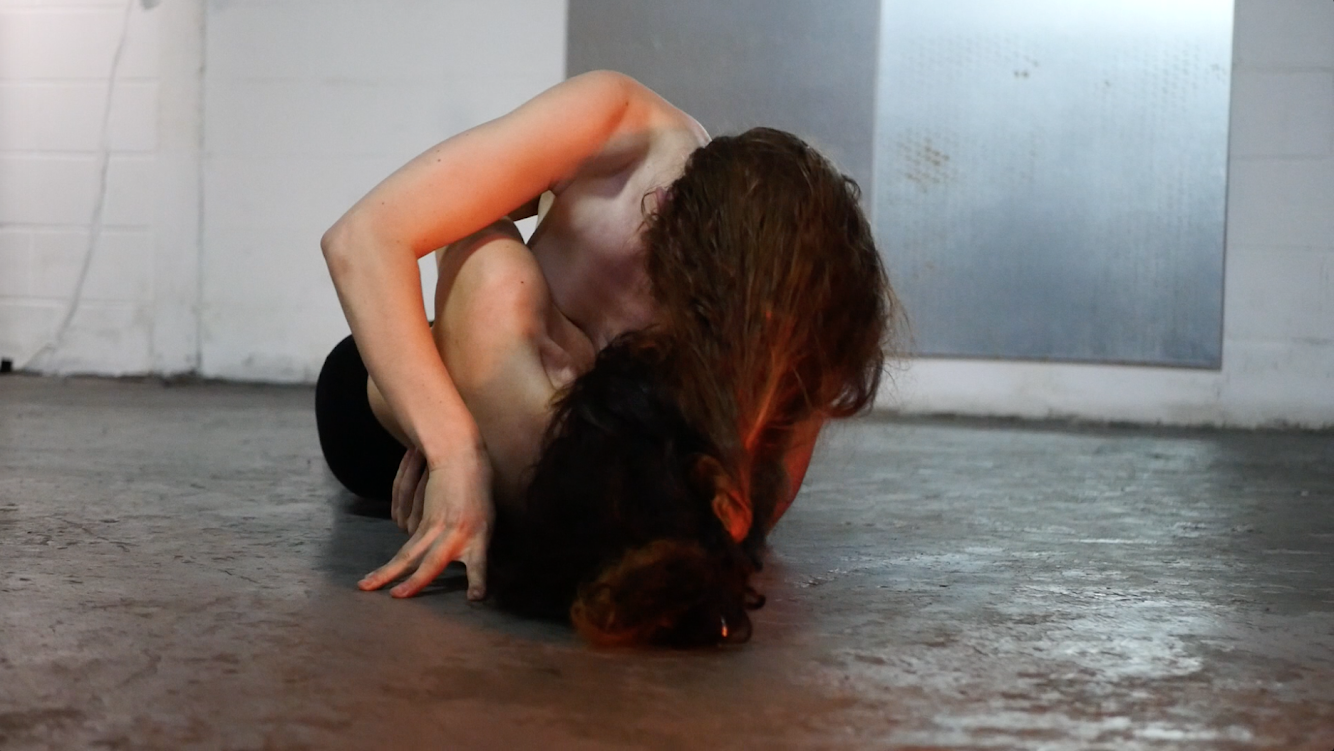
An admission. When I met Riikka Enne, who with Sophia Moffa is one of the two founders of mobile artist studio Tape Modern, I was late, having missed the preview due to other commitments. For a critic, this is not the strongest position from which to start an article: that I missed a night of performances absolutely key to the ethos of experimentation and collaboration that Tape Modern promotes. But I did. These collisions between writer, curator and practitioner can often be synchronised with relative ease, but for Tape Modern’s collaboration with the Manchester squat crew Love C.O.P.’s, the arrangement is built on a temporariness that feels clandestine — hard to grasp — and urgent. ‘Food to the Dogs is the first of many exhibitions to be arranged by Tape Modern, but it might be the last in this building’ reads the printed matter.
In the art world, the label ‘found materials’ does a lot of work. It makes a mudlark from an artist, or vice versa, and it dresses the terribly plain descriptor ‘second-hand’ in a corset, for posture, for confidence. But I like it, I love it: it is a lilypad bobbing in the quagmire of art-jargon. ‘Found materials’ is precise: it implies a find, and a founder, or a foundry — a lineage that ‘second-hand’ fails to engender; ‘second-hand’ is a term used precisely to enforce the importance of ownership — the first owner, the one who purchases, the one who consumes, the one who disposes: the first-hand. ‘Second-hand’ forgets the role of the designer, of the builder; of the making, of the finding, of the founding.
I shall return to Food to the Dogs — an exhibition showcasing the work of six artists, of such variety that I must be selective. Paper-based works touched the walls, freestanding works projected light upon them, in the studio, performance spaces formed a sort of cytoplasm about the centre — which was inhabited by the most elaborate of the artworks on display. Nicola Ellis’s 132/300 was built by hanging 132 long forged metal hooks one-from-another, from the roof to the floor, arranged as a cross within a square. The hooks (or operating poles) were used in the powder coating unit at Ritherdon Co.; their beaks and handles scuffed of their skin from years of use. In another exchange, Ellis provided Ritherdon with replacements made by the artist: so the piece becomes an exhibition of work within a work, of human energy in suspension — a mobile in a mobile space.
Riikka Enne worked as a welder and a blacksmith in her native Finland — a country, she says, that would burn with shame were any homeless person to perish in the cold. Homelessness in Finland has decreased 35% since 2010; in the same period in the UK, according to the National Audit Office, it has risen by 134%. Riikka was gracious, placing the problems of temporary accommodation and street-living outside of the simple Venn diagram of party politics. Of course, homelessness is the corollary of unaffordable housing, punitive rents out-of-step with salary increases, austerity legislation, poor mental health and substance-addiction, but discussions tend to blur the imperative. People need shelter. As it is, Food to the Dogs was closed early due to an unexpected eviction.
1 June – 14 June 2018
Published 17.06.2018 by Sara Jaspan in Reviews
539 words